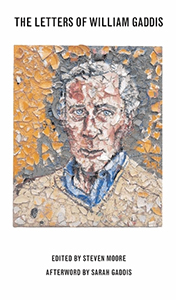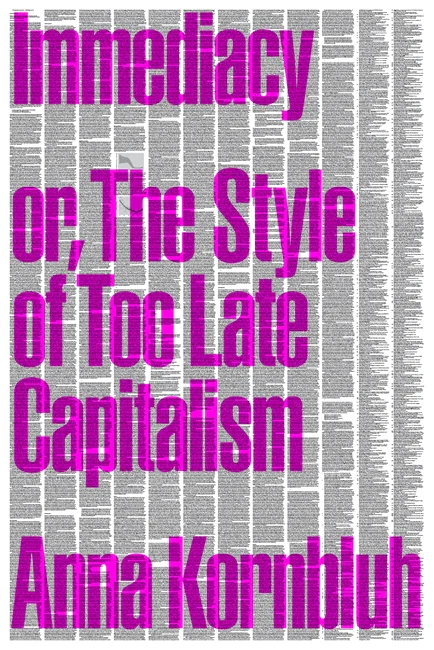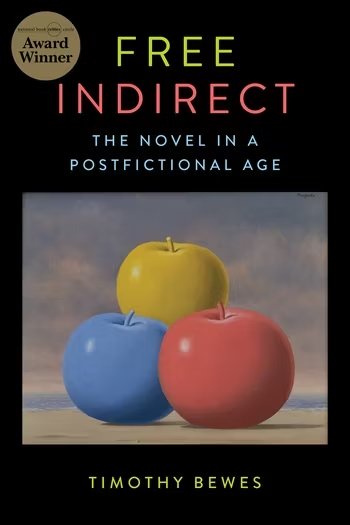Although William Gaddis continued writing up until his death in 1998, his reputation rests on his first two novels, completed several decades earlier. Both are thick books often described as ‘sprawling’ and ‘difficult’. The Recognitions (1955) – all of 956 pages of it – is a novel about counterfeiting that viciously satirises the contemporary art world; JR (1976) follows an enterprising seven-year-old who manages to establish a vast (though fraudulent) corporate enterprise across 726 pages. Both novels run heavy with unattributed dialogue, frequently alternate between settings and perspectives with little warning, and are so allusive that they have been praised – often in a backhanded way, as Gaddis himself noted – for their ‘vast erudition’. Gaddis’s later novels were comparatively shorter and more accessible, but he is still depicted as an austere writer, despite the fact that all of his writing was essentially comic.
The perception of Gaddis’s difficulty is not only based on his books, but derives in part from his reluctance to engage with the public. He refused any publicity for The Recognitions. Wounded by the bad reviews the book received and laden with the financial burden of supporting a young family, he disappeared from the public eye until the publication of his second novel, twenty-one years later. Although he became more open in the fifteen years preceding his death, almost everything we have known about him as a person, until now, has come from a small number of fragmentary or second-hand sources. There are a small number of interviews, a smattering of apparently autobiographical material in his fiction, reports from a few dedicated critics and friends who knew him, and a relatively slim collection of his essays, The Rush for Second Place (2002), many of which are every bit as hermetic as his notoriously long novels.
The publication of The Letters of William Gaddis is significant because it presents the first direct and unveiled access to this ‘reclusive’ author. For those of us who know and love Gaddis’s work, however, there is something discomfiting about such personal revelations. Gaddis’s reclusiveness was not just a matter of temperament, but of conviction. He opposed the ‘current tendency to transform the so-called creative artist into a performer’, and instead believed that artists should speak primarily through their work, a position reflected in an oft-quoted passage from The Recognitions, spoken by the novel’s protagonist, Wyatt Gwyon:
This passion for wanting to meet the latest poet, shake hands with the latest novelist, get hold of the latest painter, devour . . . what is it? What is it they want from a man that they didn’t get from his work? What do they expect? What is there left of him when he’s done his work? What’s any artist, but the dregs of his work? the human shambles that follows it around. What’s left of the man when the work’s done but a shambles of apology?
This passage casts a shadow over these letters and, fittingly, the book’s editor, Steven Moore, quotes it on the first page of his introduction. Gaddis himself frequently cited it when responding to critics and journalists who pressed him for autobiographical details. Reading through an author’s personal letters always feels slightly voyeuristic; in Gaddis’s case, it feels more like a violation of his most basic beliefs.
But Gaddis’s claim that artists are the ‘dregs’ of their work has too often been taken at face value. Critics have typically seen this position as an attack on Romantic conceptions of the artist, and have argued that it marks Gaddis as man out-of-step with his times. The devaluation of the living author in favour of the work of art was, however, a prominent feature of much twentieth century literary theory. The movement known as the New Criticism – which dominated academia and much popular criticism from the 1930s to the 1950s – favoured close readings of texts. It focused on the rhetorical effects and formal structures of a work, while denying the significance of its historical or biographical context. For the New Critics, authors were the detritus of the elevated work of art, a position famously articulated in Monroe Beardsley and William K. Wimsatt’s essay ‘The Intentional Fallacy’ (1946), which held that ‘the design or intention of the author is neither available nor desirable as a standard for judging the success of a work of literary art’. This suspicion of authorial intent was not overturned by the poststructuralist criticism that appeared in the 1960s, even though poststructuralism is often viewed as a reaction against the New Criticism, among other things. The poststructuralists argued even more strongly that an author’s intent could not be excavated from the work of art in any straightforward or unambiguous way. One only needs to consider Roland Barthes’ ‘Death of the Author’, Foucault’s replacement of the human writer with the ‘author function’, or Derrida’s famous claim that ‘il n’y a pas de hors-texte’ – often translated as ‘there is nothing outside the text’.
While Gaddis was not aware of these later theoretical developments, he did undertake a freshman literature course at Harvard in the 1940s during the heyday of the New Criticism, and had a lifelong love for the work of T.S. Eliot, whose literary essays were touchstones for the New Critics. (Allegedly, early drafts of The Recognitions contained every line of Eliot’s Four Quartets in modified form.) In this sense, Gaddis’s ideas were every bit a product of his times, and his reticence about participating in public life was shared by many of his contemporaries, including Samuel Beckett, Maurice Blanchot, J.D. Salinger and Thomas Pynchon.
With the benefit of hindsight, it now appears that these authors’ withdrawal from the public eye was meant to signify the seriousness of their work. It distanced them from the vulgar commerce of the book trade. The gesture itself became something of a cliché. It is precisely this tradition that Roberto Bolaño draws on, for example, in imagining the mysterious and elusive novelist Benno von Archimboldi in 2666 (2004). That withdrawal had become a cliché in certain respects was not lost on Gaddis, who justified his decision to enter the public sphere later in life by saying that ‘the time of being the reclusive unapproachable writer is not only over but to press it on could very well appear as a coy plea for attention’.
But there was nothing coy about Gaddis’s initial refusal, which was an essential component of his late-Modernist aesthetics, rather than a disdain for commercial matters. As his letters demonstrate, he managed his public persona carefully (albeit remotely), occasionally using intermediaries to raise his profile so that he could secure the highest advances, or ensure that his work stayed in print. Despite what would seem to be the inherent irreconcilability of his work with visual media, Gaddis long retained the hope that he might profitably sell the film rights for one of his novels to Hollywood.
Gaddis’s early claims that authors were the ‘dregs’ of their work was not a pose, but rather a deeply held belief in the transcendent capacities of the autonomous work of art. Another exchange from The Recognitions, which is not as frequently cited, makes this point clear: ‘—Genius in itself is essentially uninteresting. —But the work of genius . . .’ The implication is that Gaddis condemns the human figure of the artist to valorise the transcendent work of genius, which is transcendent precisely because it surpasses the flawed nature of the merely human. For Gaddis, art alone overcomes the contradictions and foibles of human beings. Seen in this light, he does not overturn Romantic ideas of authorship but rather – in an attempt to avoid clichéd notions of the visionary artist – transfers the transcendent powers of genius from the author to the work.
What, then, are we as readers to make of the human shambles that follows The Recognitions and JR around? Gaddis, according to his own testimony, drank too much. He struggled mightily with financial difficulties and, at times, seemed to feel that being forced to work (outside of writing novels) was somehow beneath him. His early letters depict him as something of a mamma’s boy – a characterisation he explicitly denies in one of his late letters, but which seems irrefutable having read the many detailed epistles to his mother that almost inevitably end with a request for money. Gaddis was a serial monogamist of sorts, and all of his relationships appear to have failed according to the same pattern: not with a bang but a slow, spiralling deterioration. In each case, either unable or unwilling to accept the reality of things, he tortuously prolonged the twilight of relationships that had clearly come to their end. He also probably spent too much time worrying about bad book reviews and other perceived slights. Occasionally he seems, for lack of a better word, grumpy. He appears to have taken for granted advances, fellowships, teaching opportunities, and prize winnings that would inspire jealousy in most authors.
The letters reveal, unsurprisingly, that the great novelist was a flawed human being, though he certainly doesn’t appear as either a bad man or a cruel one. His letters to his children are touching, almost sentimental, and reveal a father who was deeply concerned with their well-being and was desperately trying to do his best by them, despite his financial struggles and the failure of his two marriages. Contrary to his reputation, Gaddis was often generous with scholars who sent along papers they had written on his work – although he inevitably includes a lists of their mistakes and errata, suggesting that he took a sincere (and understandable) pleasure in critiquing his critics.
Most importantly, what comes across in the letters is his titanic, almost monomaniacal devotion to his own work, which, as he agonisingly details, accrues with a maddening slowness. Gaddis – in the tradition of Flaubert – seems to take an almost perverse pleasure in the languid obstinacy of his muse. Of course, many of Gaddis’s foibles cannot be disentangled from the single-mindedness that ultimately gave birth to his great books. His monolithic devotion, one could speculate, took up time that might have otherwise been devoted to financially necessary work, his family, and his partners.
Again, much of this is hardly surprising, but there are moments of revelation, such as the short letter Gaddis wrote to his mother in 1949 requesting that she call ‘the Mus of Natural History’ to find information on ‘the Barbary ape’, including ‘its approximate size (male); colouring; how it survives captivity; usual longevity; diet in captivity; is it tail-less?; fierce? Extinct (if so when); & any distinctive peculiarities. & also what sounds it makes (alone, in captivity).’ His mother eventually sourced the information from the Bronx Zoo and, as Gaddis fans know, this informs a key plot point early on in The Recognitions. But it also testifies to how carefully Gaddis researched his novels. Despite being lumped in with the ‘fabulists’, Gaddis remained devoted to the notion of verisimilitude, even in the most absurd moments of his fiction. Much of his correspondence during the composition of A Frolic of His Own (1994), for example, is addressed to legal professionals, whose advice Gaddis sought to ensure that his fictionalised litigation corresponded to actual case law.
Despite his meticulous research, Gaddis was not a particularly insightful reader of his own work. Most of the time, he rightly dodged requests to explicate his meaning, saying things like, ‘when the book’s done I’m pretty much finished with it, it becomes its own argument open to any attack or interpretation’ (a position similar to that articulated by the composer Stanley in The Recognitions). Elsewhere, he denies the claim that books have a ‘meaning’ which can be abstracted from them: ‘Joyce?: Q: What are you writing about? / A: I am not writing about something. I am writing something.’ But his few tentative explanations, in many ways, seem to miss what made his fiction interesting in the first place, as this brief sketching of the symbolic logic of The Recognitions shows:
what is vital is the faith that the absolute – the “perfect”, etc. – does exist . . . gold = perfection = absolute = love, in an alchemical scheme where Brown = matter (to be redeemed), Valentine = mind, Wyatt = creative spirit without love, Esme = love. That is a fragment of one undercurrent of interpretation at any rate.
While not wrong, as such, this charting of the novel’s ‘meaning’ seems to suggest that there are a series of absolute positions in the novel that can somehow be unearthed. But what is interesting about Gaddis’s work is how it avoids such simplification. The Recognitions’ entire gesture was to create an indeterminacy in which such fixed positions could not be established. This – as in the work of Dostoevsky – is the dialogic effect of writing a novel with a large ensemble cast of characters that present contradictory ideas, none of which can be considered authoritative.
Similarly, while Gaddis’s books actually contain the seed of a more radical political critique – he notes they have often been read as an ‘assault on capitalism’ – his own ideological attachments were passionately moderate: he was a centre-left adherent of democratic liberalism, who held a very American suspicion of radical ideologies. He opposed communism for the reason that its ‘abuses are inherent’ and ‘the totalitarianism it spawns inevitable’. He felt that, despite some corruption, ‘our own system [is] essentially sound’. There have been a few recent attempts to view Gaddis’s work as prescient in understanding contemporary political woes (the Los Angeles Review of Books’s reading group ‘#OccupyGaddis’, for example). But, in reality, it is hard to reconcile Gaddis’s own views on the essential goodness of capitalism and liberalism with the distinctly authoritarian bent of U.S. foreign policy over the last decade, which has spawned two wars, rendition, torture, and indefinite detention. In this sense, Gaddis’s views feel historical rather than contemporary.
I am not making these points to attack Gaddis, but rather to emphasise that, on a larger scale, he was correct in his key claim about art: his authorial intent is less compelling than the effect of reading his richly suggestive works. Put simply, his novels remain far more interesting than he was. This is why The Recognitions and JR are classics of American literature, and his later novels, if not as consistently rewarding, are still exceptional works. Nonetheless, all of the new biographical information in The Letters of William Gaddis is useful for scholars, and the volume includes scrupulous footnotes by Steven Moore, whose tireless efforts over three decades include the annotation of all of Gaddis’s five novels – annotations that are now available online. Indeed, Moore’s work is in no small part responsible for both keeping Gaddis’s work in the public eye and making it an object of study within academia.
But the reality is that Gaddis’s letters are not likely to be of particular interest to a general readership beyond his most devoted fans. As Gilbert Sorrentino once said: ‘It is difficult to accept a life as nothing more or less than the pattern it makes.’ What Gaddis’s correspondence reveals is precisely such a set of patterns. He anticipated the humdrum nature of many of his letters, which he describes as ‘detritus’. He seems to have viewed them as a future source of income for his children: ‘I long suspected that my papers, letters &c. would eventually bring more money (not necessarily to me) than royalties on my books themselves.’ His early letters do occasionally display a line here or there that stands with the best of his writing (‘Spain is not the kind of country you travel in; it is a country you flee across’). But many are also clearly the work of a young and self-involved author. As Gaddis himself noted later, ‘my early letters were many times written with the vain notion of eventual publication & thus obviously much embarrassing nonsense.’
The Letters of William Gaddis is nonetheless a landmark publication with respect to the broader reception of Gaddis’s work. For several decades, Gaddis scholars have had to act as his de facto advocates, arguing that he is criminally under-recognised. They have drawn parallels between Gaddis and one of his characters, the composer Stanley, whose work, as described in the final lines of The Recognitions, ‘is still spoken of, when it is noted, with high regard, though seldom played.’ The result has been that Gaddis’s work has often seemed ‘underground’ in a way that – as Jonathan Franzen noted in his 2002 article on Gaddis, ‘Mr. Difficult’ – would appeal to ‘those skinny young men in scary glasses and thrift-store clothes . . . who look like they possess massive amounts of data about small-label rock bands or avant-garde literature.’ But as this collection – along with the increasing interest in his work – demonstrates, Gaddis is finally receiving his late recognition as one of the most important U.S. authors of the twentieth century. His increasingly assured place in the canon means that his work can now be assessed more objectively, as a great body of work, rather than an oeuvre that needs to saved from obscurity.
References
Roland Barthes, ‘The Death of the Author,’ Image, Music, Text (Fontana, 1977).
Monroe Beardsley and William K. Wimsatt, ‘The Intentional Fallacy,’ The Verbal Icon: Studies in the Meaning of Poetry (University of Kentucky Press, 1954).
Roberto Bolaño, 2666 (Farrar, Straus and Giroux, 2008).
Jacques Derrida, Of Grammatology (Johns Hopkins Press, 1976).
Michel Foucault, ‘What Is an Author?’ The Essential Foucault: Selections from Essential Works of Foucault, 1954-1984 (New Press, 2003).
Jonathan Franzen, ‘Mr. Difficult,’ The New Yorker (30 September 2002).
Lee Konstantinou, ‘#OccupyGaddis,’ Los Angeles Review of Books (8 June 2012).
Gilbert Sorrentino, Imaginative Qualities of Actual Things (Dalkey Archive Press, 1995).
The Gaddis Annotations.







